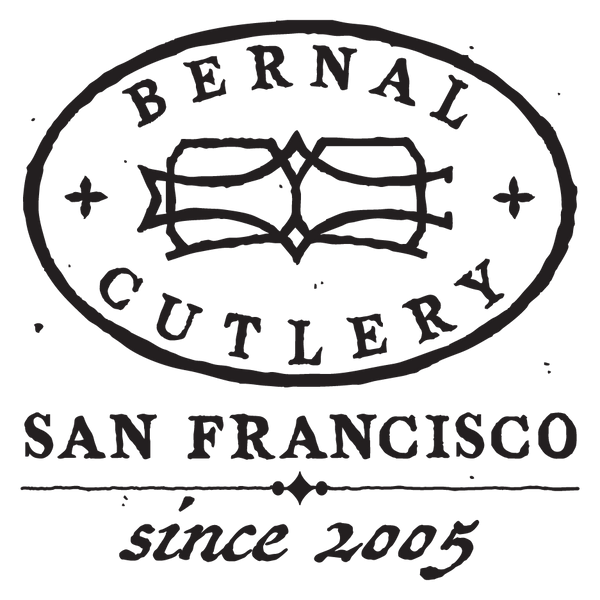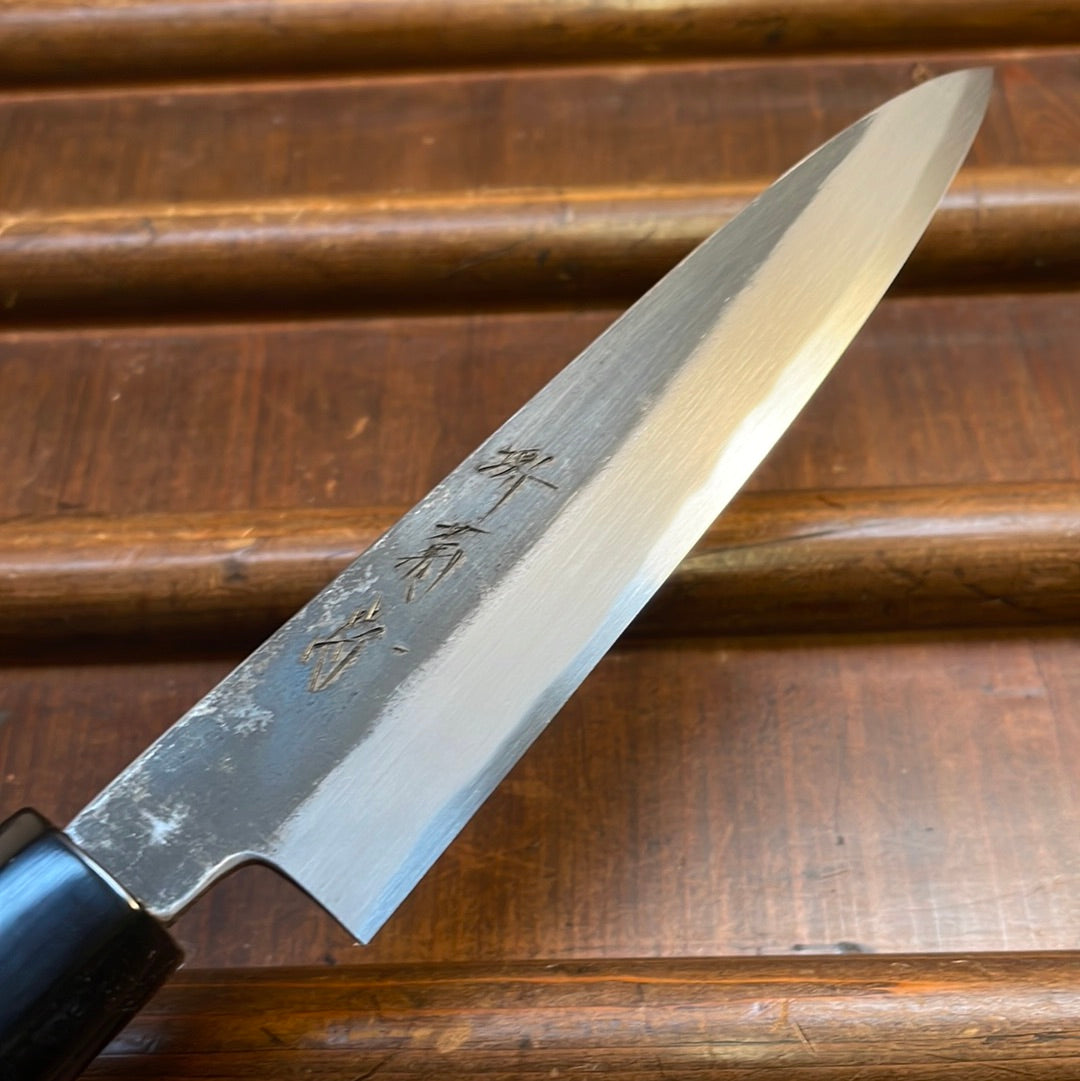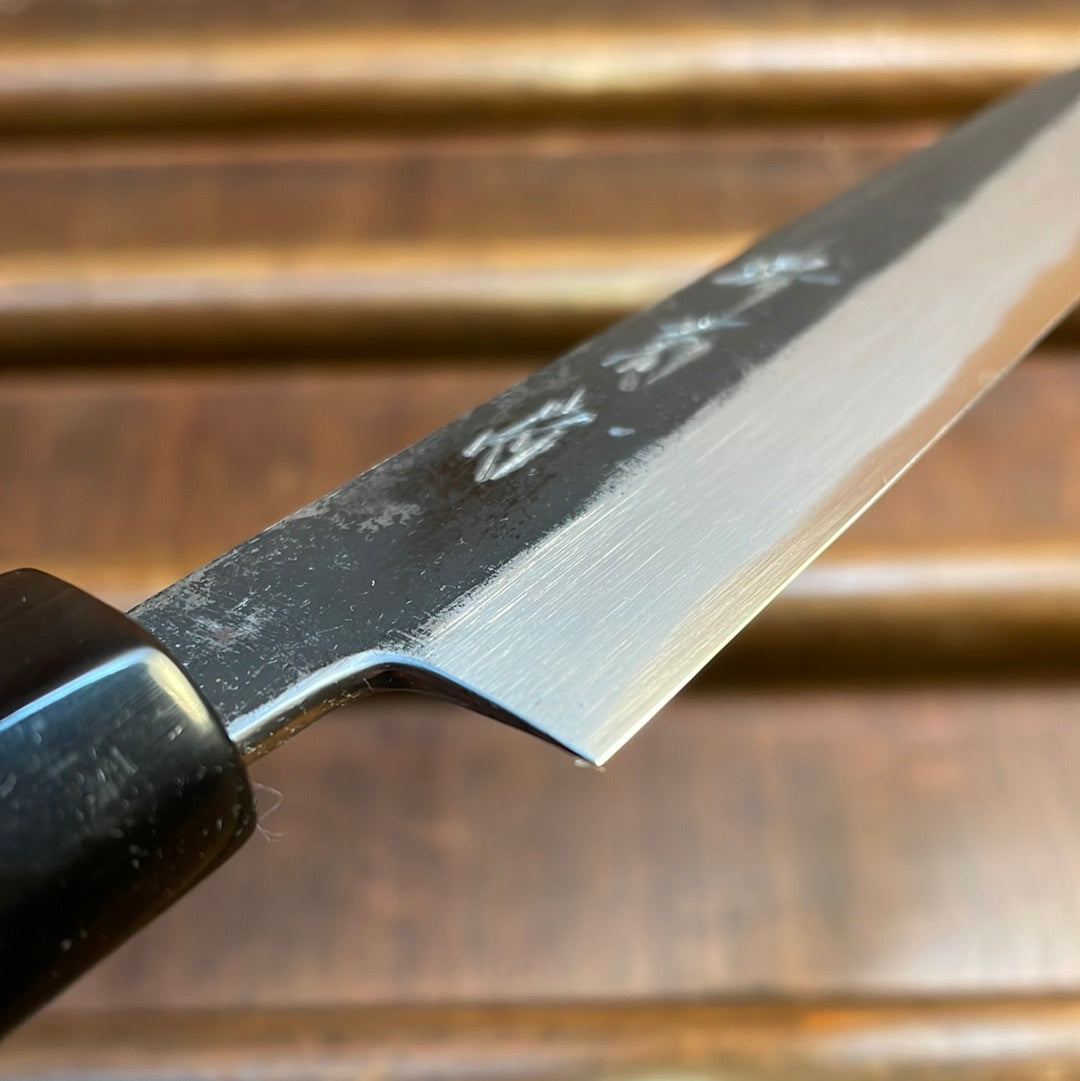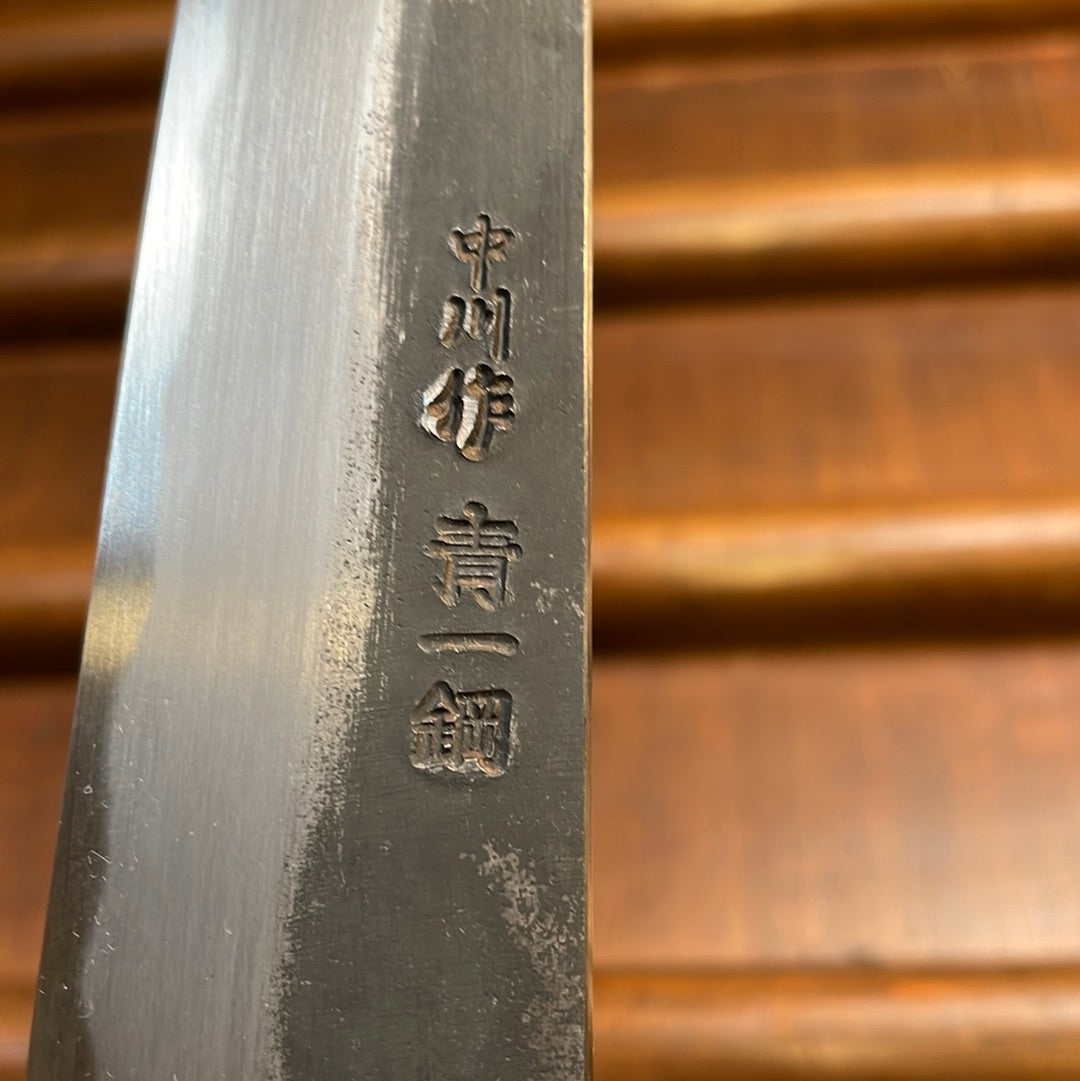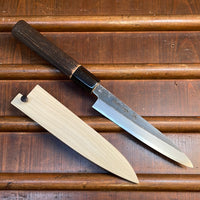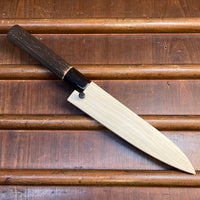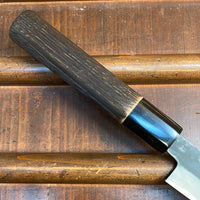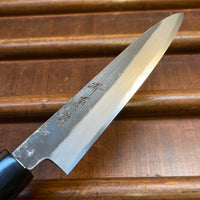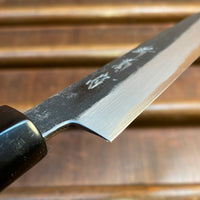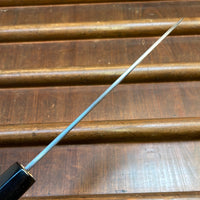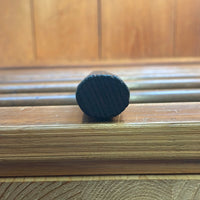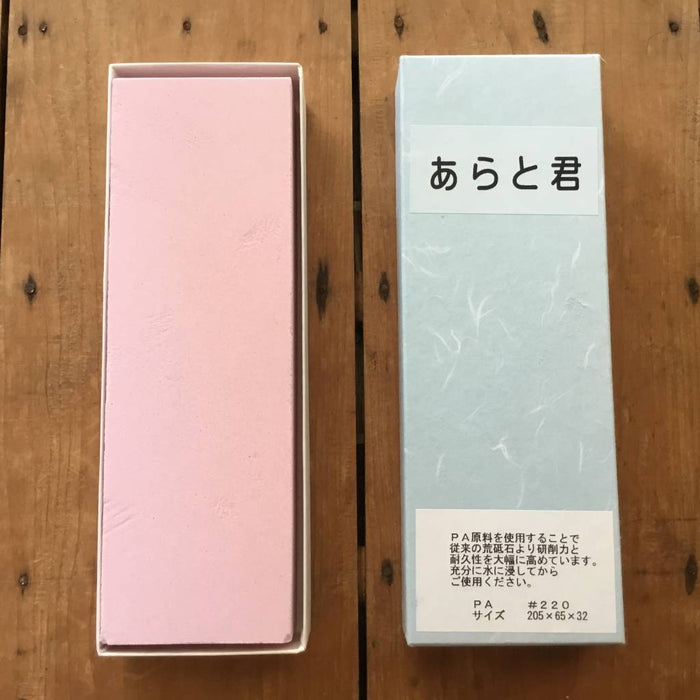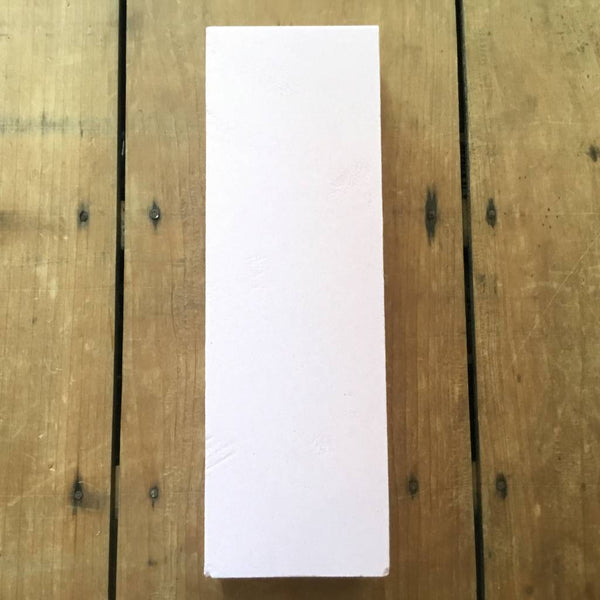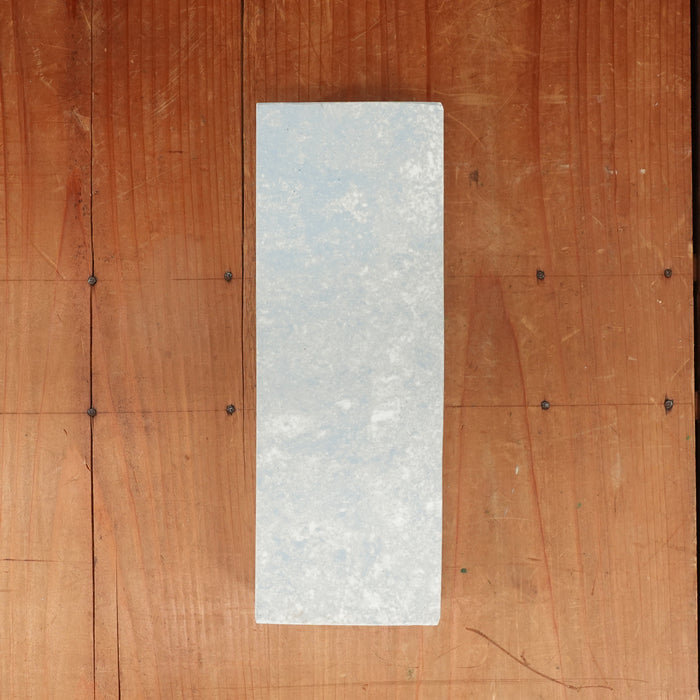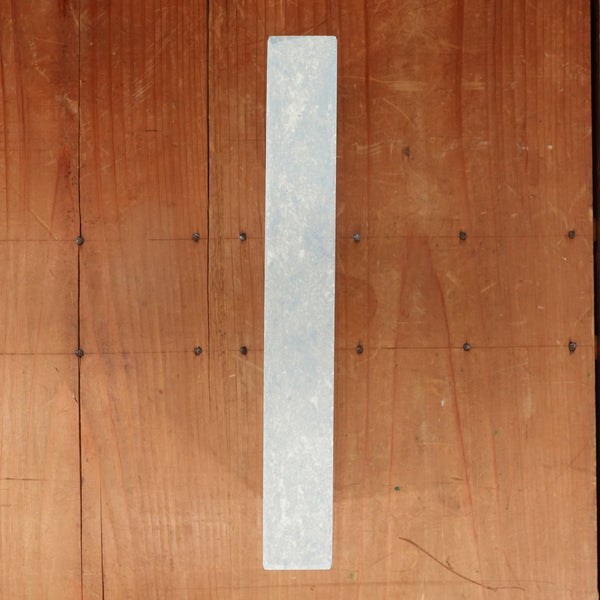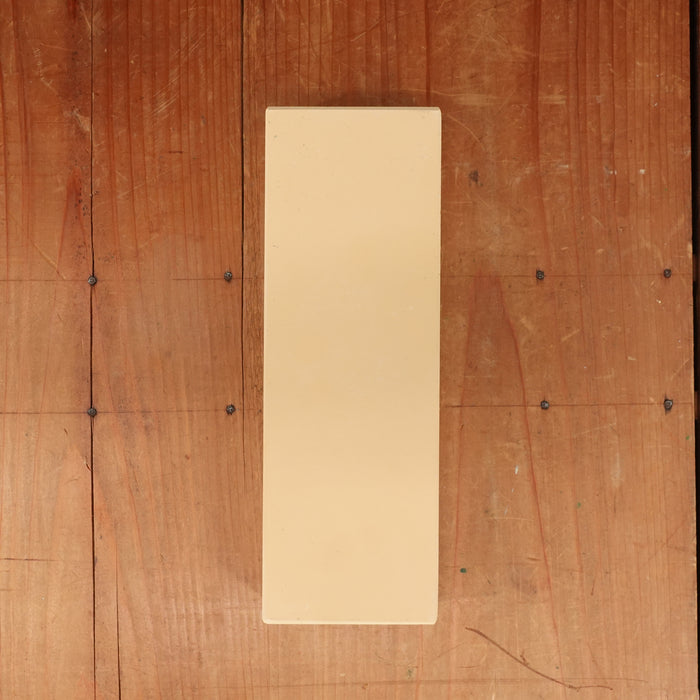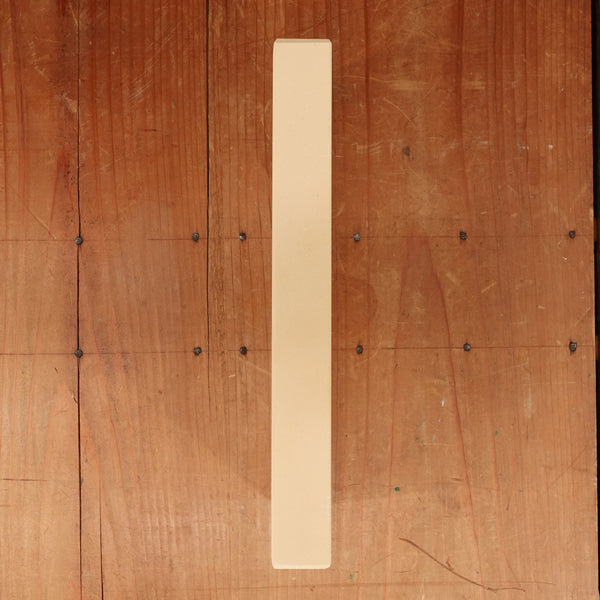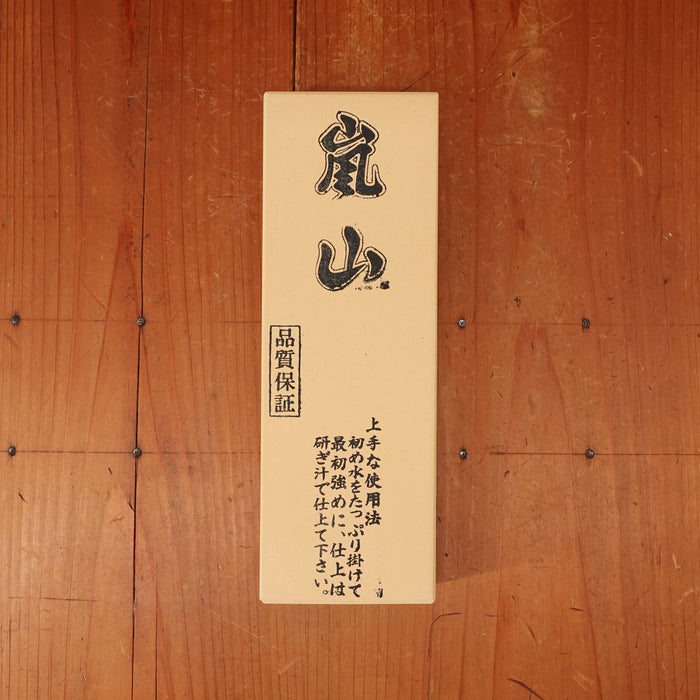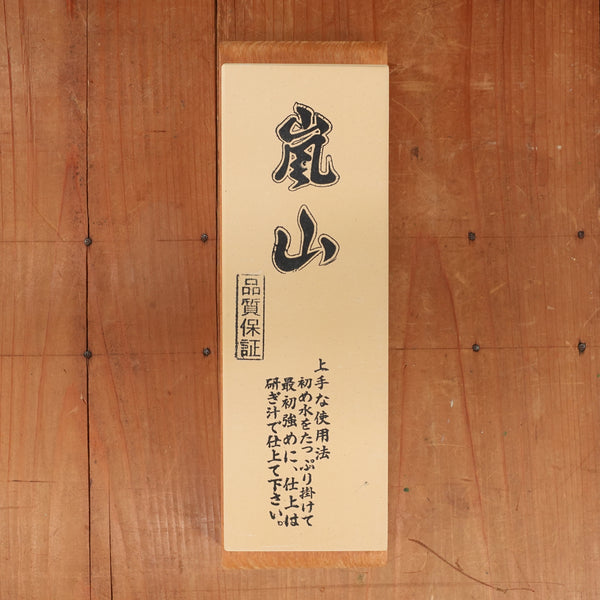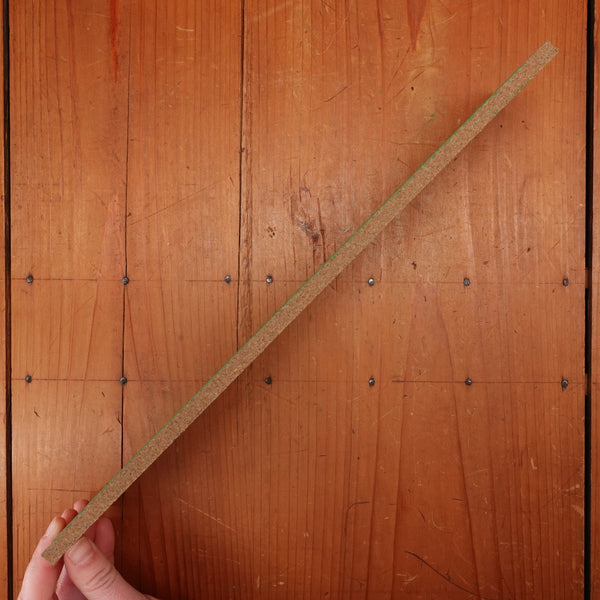Sakai Kikumori Nakagawa x BC 150mm Petty Aogami 1 Kurouchi Burnt Chestnut with Saya
-
Regular Price
-
€318,97
-
Sale Price
-
€318,97
-
Regular Price
-
Sold Out
-
Unit Price
- per
- Regular Price
- €318,97
- Sale Price
- €318,97
- Regular Price
- Unit Price
- per
We are proud to introduce as the sole North American retailer, knives done as a collaboration between Sakai Kikumori and Nakagawa Hamono. Inspired by a conversation with Bernal Cutlery’s Lisa and Josh and Sakai Kikumori. Kawamura-san at Kikumori asked what we would like to see, and shirogami 1 and aogami 1 kurouchi pettys from Nakagawa Hamono came to mind.
These knives represent a blend of the rustic and the refined. They have a dark forge-scale kurouchi finish and exceptionally thin grinds to support the superb forging. Nakagawa-san's smithing is characterized by thorough heat treatment with excellent heat control during forging. The result are knives that have remarkable edge formation and edge retention while remaining tough.
Aogami 1 is a low contaminate carbon steel with tungsten as a main alloy ingredient. Sometimes, Aogami 1 is overshadowed by its sibling, aogami super, which has a higher alloy content that includes vanadium for long edge life. Aogami 1 has better edge formation and typically works better at finer finishes than the busier aogami super. Nakagawa-san’s aogami 1 has a nice blend of edge life, toughness, and edge formation. Nakagawa-san’s aogami 1 has a bitey feeling even at finer finishes that can often leave aogami steels feeling sterile or slidey. Nakagawa’s aogami 1 also works very nicely with a variety of natural stones.
These have a natural (as opposed to chemically applied) kurouchi finish which will include some hammer marks and rougher cosmetic grinder marks. When cared for properly, the kurouchi will gradually fade and be replaced with a patina from use.
When new, the burnt chestnut handle may transfer to your hands.
Sakai Kikumori was started in 1926 and draws on Sakai's 600 year history as the major center of traditional Japanese cutlery manufacturing. They work with a large variety of Sakai's best smiths, sharpeners and small factories to offer a wide variety of knives ranging from traditional to modern.
About This Knife



Listed Length: 150mm
Total Length: 279mm
Edge Length: 142mm
Heel Height: 28mm
Spine Thickness: 2.92mm
Weight:
Orientation: Ambidextrous
Blade Type: Carbon Steel
Steel Type: Aogami 1 (Blue Paper #1)
Steel Hardness (HRC): 63-64
Reactive: More Attention
Handle Type: Japanese (wa)
Handle Material: Burnt Chestnut & Horn Ferrule
Dive Deeper
Medium-fine finish
Sharpening Supplies
Stones & Accessories selected specifically for this knife.
Arato-kun #220 Extra Coarse Grit Whetstone
- Regular Price
- €29,96
- Sale Price
- €29,96
- Regular Price
-
- Unit Price
- per
Bernal Cutlery Takarazukushi 1200 Grit Blue Marble Semi-Soft Ceramic Japanese Whetstone
- Regular Price
- €65,20
- Sale Price
- €65,20
- Regular Price
-
- Unit Price
- per
Bernal Cutlery Takarazukushi 4000 Grit Yellow Semi-Hard Resinoid Japanese Whetstone
- Regular Price
- €72,25
- Sale Price
- €72,25
- Regular Price
-
- Unit Price
- per
Arashiyama #6000 Whetstone Stone NO Wooden Base
- Regular Price
- €51,11
- Sale Price
- €51,11
- Regular Price
-
- Unit Price
- per
Arashiyama #6000 Whetstone With Nagura Stone and Wooden Base
- Regular Price
- €54,63
- Sale Price
- €54,63
- Regular Price
-
- Unit Price
- per
Bernal Cutlery Monodiachrome™ Precharged Deburring Strop
- Regular Price
- €35,25
- Sale Price
- €35,25
- Regular Price
-
- Unit Price
- per
